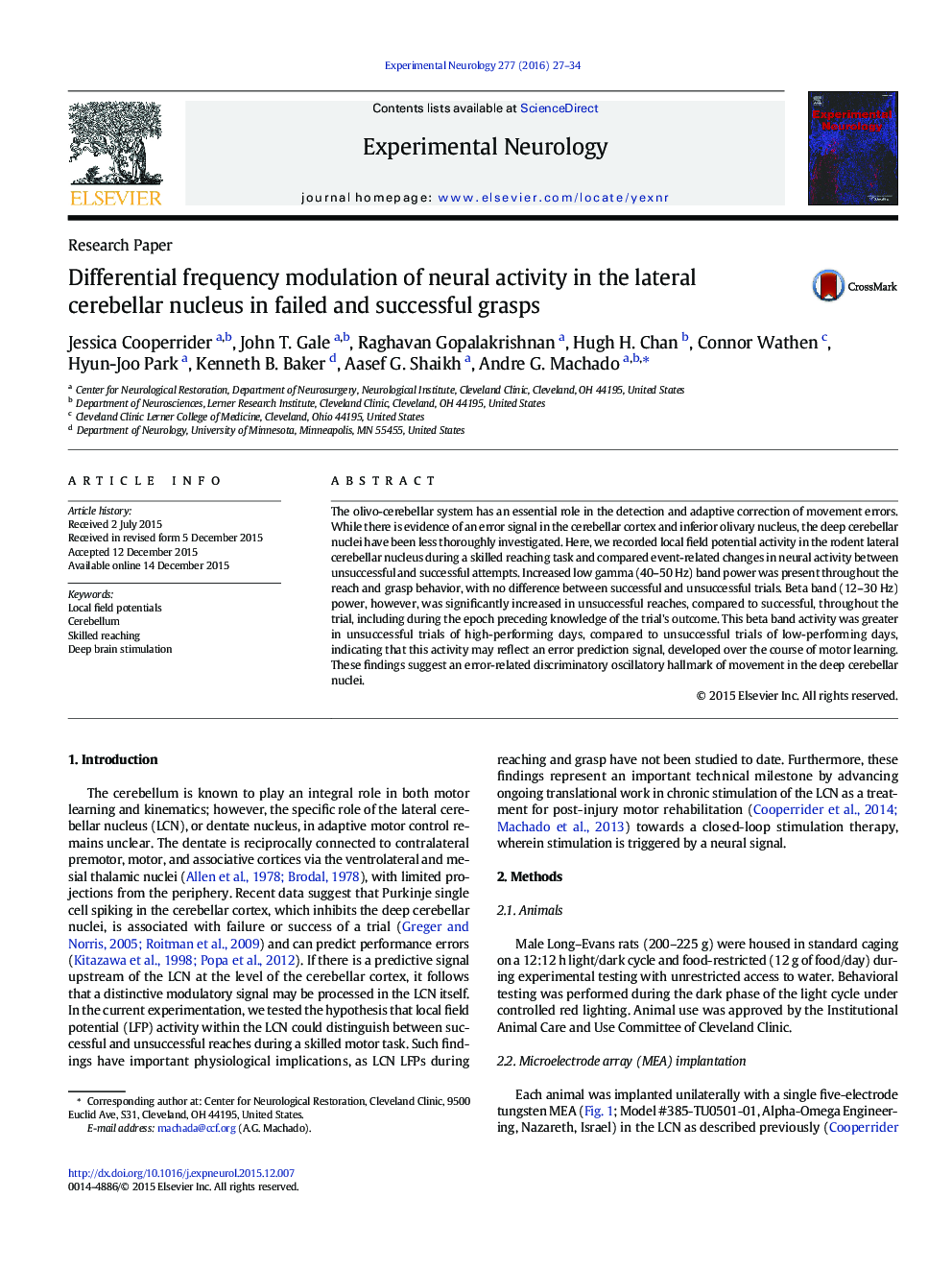| Article ID | Journal | Published Year | Pages | File Type |
|---|---|---|---|---|
| 6017112 | Experimental Neurology | 2016 | 8 Pages |
Abstract
The olivo-cerebellar system has an essential role in the detection and adaptive correction of movement errors. While there is evidence of an error signal in the cerebellar cortex and inferior olivary nucleus, the deep cerebellar nuclei have been less thoroughly investigated. Here, we recorded local field potential activity in the rodent lateral cerebellar nucleus during a skilled reaching task and compared event-related changes in neural activity between unsuccessful and successful attempts. Increased low gamma (40-50Â Hz) band power was present throughout the reach and grasp behavior, with no difference between successful and unsuccessful trials. Beta band (12-30Â Hz) power, however, was significantly increased in unsuccessful reaches, compared to successful, throughout the trial, including during the epoch preceding knowledge of the trial's outcome. This beta band activity was greater in unsuccessful trials of high-performing days, compared to unsuccessful trials of low-performing days, indicating that this activity may reflect an error prediction signal, developed over the course of motor learning. These findings suggest an error-related discriminatory oscillatory hallmark of movement in the deep cerebellar nuclei.
Related Topics
Life Sciences
Neuroscience
Neurology
Authors
Jessica Cooperrider, John T. Gale, Raghavan Gopalakrishnan, Hugh H. Chan, Connor Wathen, Hyun-Joo Park, Kenneth B. Baker, Aasef G. Shaikh, Andre G. Machado,
